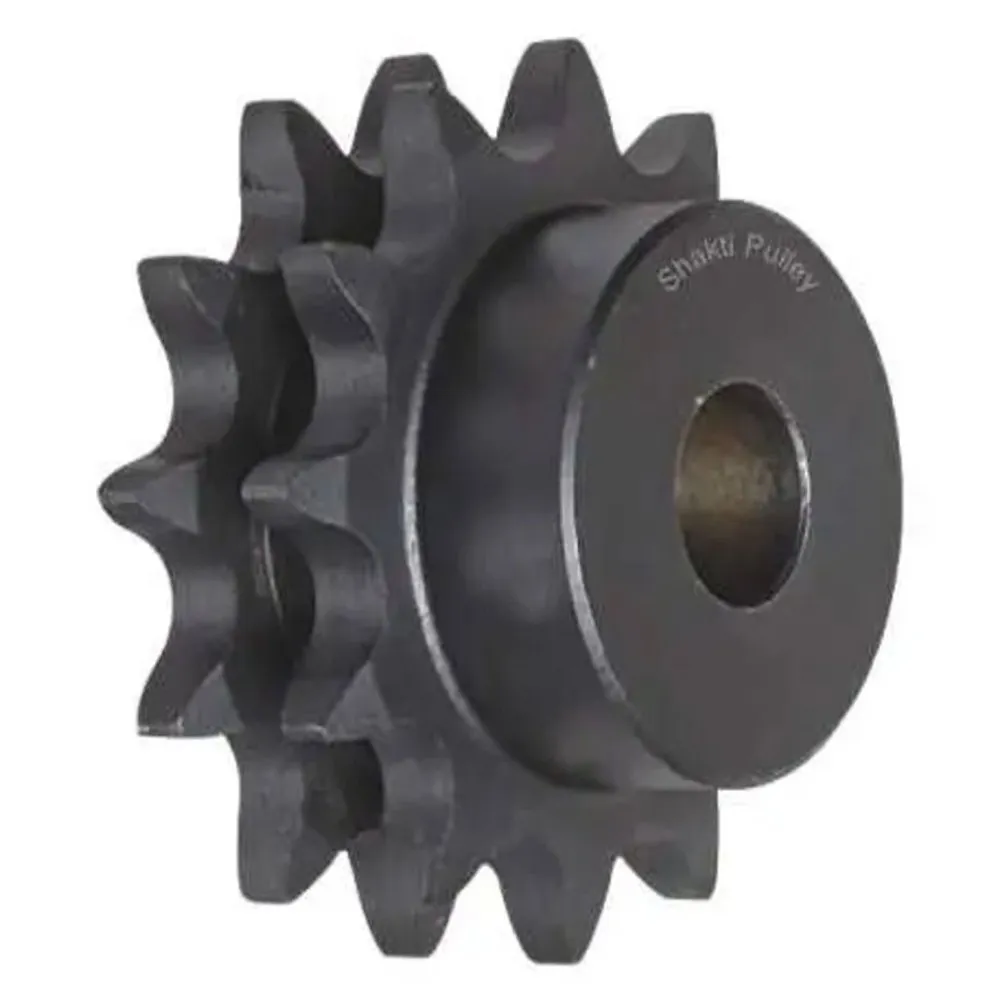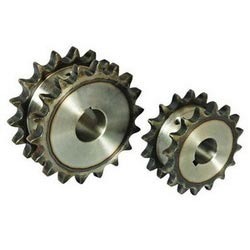Product Description
Flat Belt Pulley Hub Lock Bushes Timing Metal Bore Sprocket Gear Transmission Machine Parts Manufacture Best Sale Durable European Standard Durable Pulleys
Product Description
Flat Belt Pulley
The molded CHINAMFG helps to center the belt and prevent rubbing against the outside flanges. This arrangement provides maximum support where it is needed–under the highly stressed center of the belt! A wide range of widths and diameters is available to suit virtually any flat belt idler requirement and several types of factory-mounted bore adapters are offered.
/* January 22, 2571 19:08:37 */!function(){function s(e,r){var a,o={};try{e&&e.split(“,”).forEach(function(e,t){e&&(a=e.match(/(.*?):(.*)$/))&&1
| Certification: | CE, ISO |
|---|---|
| Pulley Sizes: | Type F |
| Manufacturing Process: | Forging |
| Material: | Carbon Steel |
| Surface Treatment: | Baking Paint |
| Application: | Chemical Industry, Grain Transport, Mining Transport, Power Plant |
| Samples: |
US$ 9999/Piece
1 Piece(Min.Order) | |
|---|

Are there different types of sprocket pulleys, and how do they vary in industrial use?
Yes, there are different types of sprocket pulleys, each designed to suit specific industrial applications. Here’s an explanation of the various types and their variations:
1. Standard Sprocket Pulleys: Standard sprocket pulleys are the most common type and are widely used in industrial applications. They typically have a cylindrical shape with evenly spaced teeth and are available in various sizes and materials. Standard sprocket pulleys are used in a wide range of industries, including manufacturing, automotive, agriculture, and machinery.
2. Taper-Lock Sprocket Pulleys: Taper-lock sprocket pulleys have a unique design that allows for easy installation and removal. They feature a tapered bore with a corresponding sprocket hub that can be mounted on a shaft by tightening a set of screws. Taper-lock pulleys provide a secure and reliable connection, making them suitable for applications where frequent pulley changes or maintenance is required.
3. Split Sprocket Pulleys: Split sprocket pulleys are designed with a split hub or a two-piece construction that allows for easy installation or replacement without the need to disassemble the entire system. They are commonly used in applications where access to the shaft or the chain is limited, making maintenance or pulley changes more convenient.
4. Idler Sprocket Pulleys: Idler sprocket pulleys are used to guide or redirect the chain in a chain-driven system. They do not transmit power but help to maintain proper tension and alignment. Idler pulleys are often used in applications with complex paths, multiple sprocket pulleys, or long spans between driving and driven pulleys. They contribute to reducing chain vibration, enhancing system stability, and improving overall performance.
5. Specialty Sprocket Pulleys: Specialty sprocket pulleys are designed for specific applications or unique requirements. They may include custom tooth profiles, non-standard sizes, or specialized materials. Examples of specialty sprocket pulleys include those used in high-temperature environments, food-grade applications, or in industries such as mining, forestry, or marine where they need to withstand harsh conditions.
6. Timing Belt Pulleys: Although not technically sprocket pulleys, timing belt pulleys are worth mentioning as they serve a similar purpose in power transmission systems. Timing belt pulleys have grooves that match the teeth of timing belts, enabling precise motion control and synchronization. They are commonly used in applications that require accurate positioning, such as robotics, CNC machines, and printing presses.
Each type of sprocket pulley offers specific advantages and is selected based on factors such as the application requirements, load conditions, ease of installation, maintenance considerations, and the desired performance of the chain-driven system.

Can sprocket pulleys be retrofitted into existing machinery for performance improvements?
Yes, sprocket pulleys can often be retrofitted into existing machinery to achieve performance improvements. Retrofitting sprocket pulleys can be a cost-effective solution to enhance the efficiency, reliability, and functionality of machinery without the need for complete equipment replacement. Here are several factors to consider when retrofitting sprocket pulleys:
1. Compatibility: Assess the compatibility of the existing machinery with a sprocket pulley system. Consider factors such as the available space, the presence of suitable mounting points, and the feasibility of integrating a chain drive system. It is important to evaluate if the existing machinery can accommodate the necessary modifications required for retrofitting sprocket pulleys.
2. Application Requirements: Determine the specific performance improvements desired in the machinery. Identify the aspects that need enhancement, such as speed control, torque transmission, or load distribution. By understanding the application requirements, you can select sprocket pulleys with appropriate specifications, such as tooth count, pitch diameter, or material, to achieve the desired performance improvements.
3. Engineering Analysis: Conduct a thorough engineering analysis to assess the feasibility and potential benefits of retrofitting sprocket pulleys. Consider factors such as the anticipated performance gains, the estimated costs of retrofitting, and the expected return on investment. An engineering analysis helps in making an informed decision regarding the retrofitting process and justifies the associated expenses.
4. Design and Fabrication: Engage with experienced professionals or engineers to design and fabricate the retrofitting components. This may involve creating custom adapters, brackets, or mounting systems to integrate the sprocket pulleys into the existing machinery. The design and fabrication process should ensure proper alignment, adequate strength, and compatibility with the original equipment.
5. Installation and Testing: Follow proper installation procedures when retrofitting sprocket pulleys into the machinery. Ensure that the chain drive system is correctly aligned, tensioned, and lubricated according to manufacturer recommendations. Conduct thorough testing and verification to validate the performance improvements achieved through the retrofitting process.
6. Maintenance and Support: Consider the long-term maintenance and support requirements of the retrofitting components. Ensure that replacement parts, lubricants, and maintenance procedures are readily available to sustain the improved performance of the machinery. Regular inspections and maintenance should be carried out to monitor the performance of the sprocket pulleys and address any issues promptly.
While retrofitting sprocket pulleys can provide performance improvements, it is essential to consider the expertise required for the retrofitting process and the potential impact on warranties or original equipment certifications. Engaging qualified professionals and collaborating with equipment manufacturers or suppliers can help ensure a successful retrofitting project.

In which industries and machinery are sprocket pulleys commonly used?
Sprocket pulleys find extensive use in various industries and machinery. Here’s a list of industries and machinery where sprocket pulleys are commonly employed:
1. Manufacturing: Sprocket pulleys are widely used in manufacturing industries for power transmission and motion control. They are found in conveyor systems, assembly lines, automated machinery, and other manufacturing equipment.
2. Automotive: Sprocket pulleys are essential components in automotive engines, particularly in the timing system. They help synchronize the movement of the camshaft and crankshaft, ensuring precise valve timing and efficient engine performance.
3. Transportation: Sprocket pulleys are utilized in transportation systems such as trains, trams, and bicycles. In trains and trams, they are found in the propulsion systems for transmitting power from the motor to the wheels. In bicycles, sprocket pulleys are part of the drivetrain system, enabling power transfer from the pedals to the wheels.
4. Packaging and Material Handling: Sprocket pulleys are employed in packaging machines and material handling equipment, including conveyors, sorting systems, and lifting mechanisms. They facilitate the movement and transportation of goods in industries such as logistics, warehouses, and distribution centers.
5. Agriculture: Sprocket pulleys are used in agricultural machinery for tasks such as driving conveyor belts in harvesting equipment, powering irrigation systems, and operating machinery for crop processing.
6. Construction: Sprocket pulleys find application in construction machinery, especially in equipment like excavators, cranes, and concrete mixers. They enable the transfer of power to various components, facilitating the movement and operation of heavy machinery.
7. Printing and Paper Industry: Sprocket pulleys are utilized in printing presses and paper processing equipment. They help control the movement of paper rolls, ensuring precise feeding, cutting, and printing operations.
8. Textile Industry: Sprocket pulleys are commonly found in textile machinery, including spinning machines, weaving looms, and knitting machines. They assist in driving the movement of yarns and fabrics, enabling efficient production processes.
9. Mining: Sprocket pulleys are employed in mining equipment for tasks such as conveying materials, operating crushers and screens, and driving heavy-duty machinery used in extraction and processing.
10. Food Processing: Sprocket pulleys are used in food processing equipment, including mixers, conveyors, and packaging machines. They help in the movement, mixing, and packaging of food products in a hygienic and efficient manner.
These are just a few examples of the industries and machinery where sprocket pulleys are commonly used. Their versatility, reliability, and ability to handle high-speed and heavy-duty operations make them essential components in various applications.


editor by CX
2024-04-17
